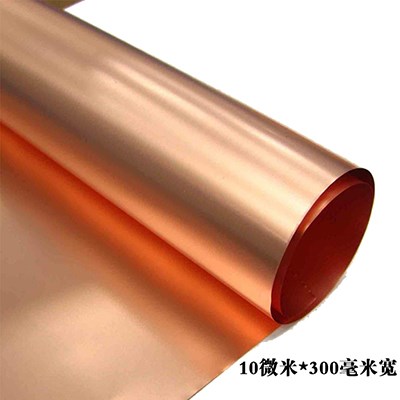Calendered copper foil The product has good ductility, flexibility, low roughness and high folding resistance, and has become the basic material of flexible printed circuit board, mainly used in flexible circuit board and high-frequency circuit board. In order to meet the requirements of circuit board for heat resistance, corrosion resistance and solderability of copper foil, the surface of rolled copper foil generally needs to be blackened (copper cobalt nickel or copper nickel coating) and reddened (pure copper coating). Reddening (copper plating) treatment method Electrolytic copper foil However, the peel resistance, etchability and solderability of the FCCL made of the rolled copper foil treated by this method cannot meet the production requirements of the flexible printed circuit board, so the rolled copper foil surface treatment technology characterized by blackening has been formed.

The current blacking technology of the rolled copper foil surface generally carries out complex treatment on the surface of the rolled copper foil, and the copper foil surface needs to be repeatedly plated with copper, nickel cobalt, zinc and even chromium. Among them, the most important is nickel cobalt plating. The black color is obtained by adding cobalt containing compounds, even cyanide such as KSCN, NHSCN, SC (NH2) 2, into the nickel plating solution as a blackening agent. However, the use of blackening agent will lead to serious pollution problems, and the pure use of cobalt containing blackening agent often fails to get the required black, more just gray coating. In addition, because cobalt is a strategic material element with high price, the use of cobalt containing compounds will also increase the production cost of copper foil processing.




